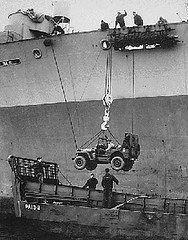Extended waits in doctors' offices and hospitals are quite conducive to thoughts of mortality, don't you find?
Some of you will be aware of my current work,
The Encyclopedia of Pulp Heroes, which I'm writing for
MonkeyBrain Books and which is currently due out in spring 2009. The book will have plenty of pulp heroes described in it, but also a lot more than that: characters from the slicks, from series novels of all genres, from comic strips, radio shows, movie serials, and from popular literature and film from around the world--anything appearing between 1902 and 1945 is fair game.
As you might imagine, this encompasses a lot of characters. Around 5,000, in fact, across 750,000+ words, and the work of over 3,500 creators.
I've spent years working on this book, and (as you might imagine) have done a
lot of research. In front of my computer, in the stacks of my library, in the stacks of many other libraries, and, of course, reading. I've read a lot of books for this--in cars, trains, planes, subways. And, more recently, in hospitals and doctors' offices.
What I keep returning to is the essential frangibility and transience of it all. One of the things which drives most writers is the notion of legacy, of leaving a mark on the world of letters. We all want to entertain or educate, but more than that we want to be remembered. It's not enough to make a fan with your work--you want that person to remain a fan ten years from now.
And yet the sad truth is that this quest for--if not immortality, than some kind of enduring legacy--is, for all but a few of us, doomed. Some authors will enter the canon and be read two hundred years from now, if there are readers left to read. In 2207 people will still be reading Gene Wolfe and Patrick O'Brian. But the rest of us have much more uncertain fates. And we know this. And I think many of us, on a level we don't particularly want to acknowledge, worry about this. How long will our work last? How long will we be remembered?
We can assume that a lifetime's work will leave some kind of mark, and that, in the electronic world of the Intertubes, there will be a record of our work.
Probably not, though. Consider T. Arthur Plummer.
The indispensable
Al Hubin gives Plummer's birth and death dates as 1883 and 1961, which is more than WorldCat, the British Library, and various newspapers and government death indices were able to provide.
Mr. Plummer wrote over seventy novels. Fifty of them were about his series character, Detective-Inspector Andrew Frampton of Scotland Yard's Criminal Investigation Department. The first was
Shadowed by the C.I.D. (1932), the last was
Murder at Brownhill (1962). Fifty novels about the same character, over thirty years.
A total of 57 copies of Mr. Plummer's books exist in libraries in the U.S. and U.K. A Google search for the phrase "T. Arthur Plummer" comes up with 118 hits. (In comparison, "Godzilla bukkake" yields 415, and "Harry Stephen Keeler" gives 39,800). A Google search for "'andrew frampton' plummer" gives 111 hits. A Google Image search for Mr. Plummer's work gives only one image, the one above, found at
Classic Crime Fiction. If you're looking for reliable information online about Mr. Plummer, Classic Crime Fiction has a barebones
bibliography of his work, and the e-text of Lofts' & Adley's
Crime Fighters has a fifty-nine word descripton of Frampton.
The man wrote seventy novels in his lifetime. Fifty of them about one character. There was a time when Plummer and Frampton would have been as widely known to mystery fans as, say,
Robert Parker's
Spenser is now, or
P.D. James's
Adam Dalgliesh. Plummer, and Frampton, would have had thousands--tens of thousands?--of fans. The stores would have been full of their books. (Abebooks only lists 116 copies of Plummer's novels for sale. Harry Stephen Keeler has 519).
And yet today Plummer, and Frampton, don't even pass the Mendoza Line of internet site hits.
I think about these things while writing
Pulp Heroes. It's an idle conceit, but I like to think that by writing about Plummer and Frampton and the many other forgotten authors and characters, by drawing attention to them in a scholarly, modern work, I'm setting out blood (or beans, if you're a Roman) for the hungry ghosts of those writers.
All but a lucky few writers are doomed to oblivion. It's up to us to prevent that from happening.































